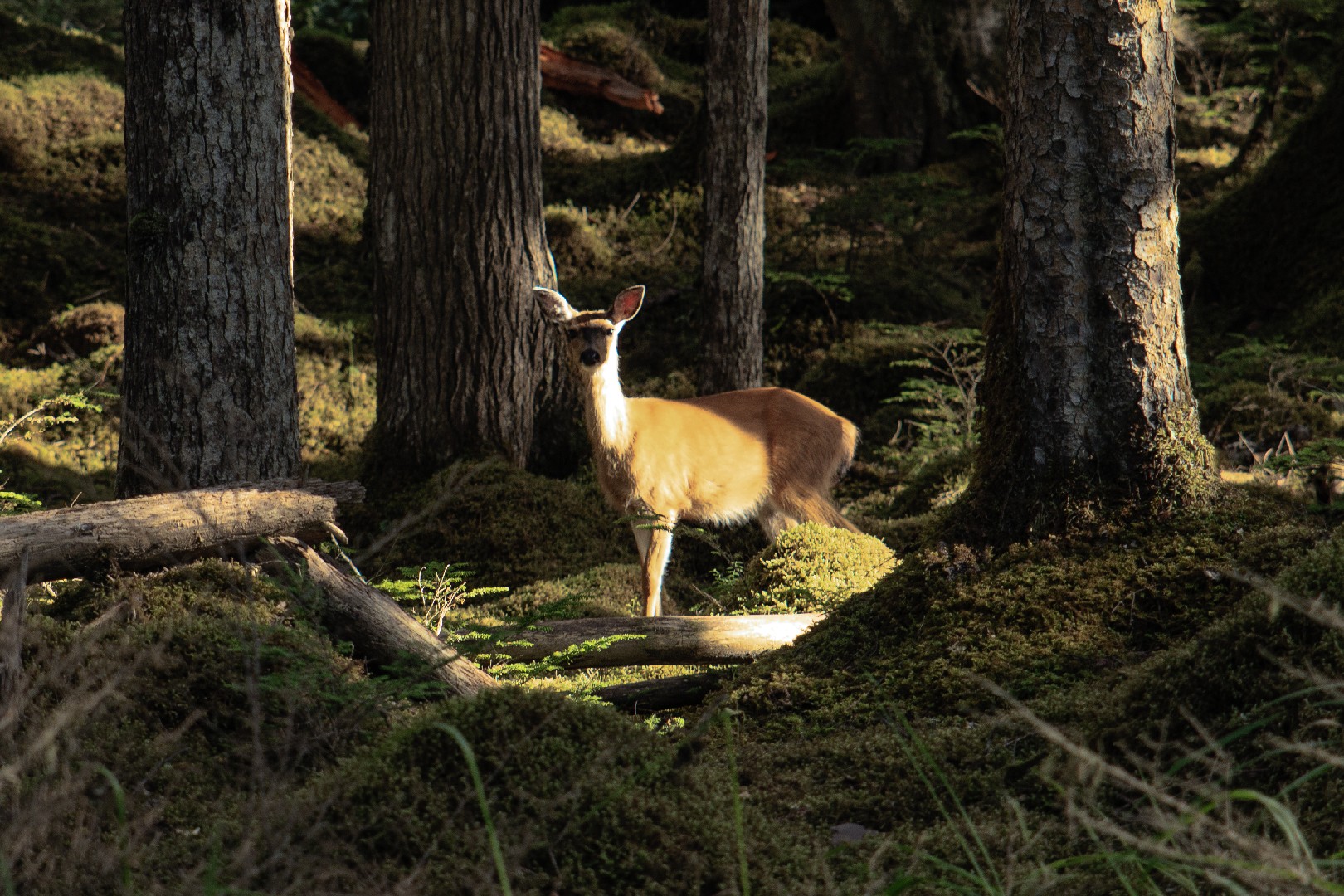Sitka deer
A species of Hollow-tooth Scientific name : Odocoileus hemionus sitkensis Genus : Hollow-tooth
Sitka deer, A species of Hollow-tooth
Scientific name: Odocoileus hemionus sitkensis
Genus: Hollow-tooth
Content
Description General Info
 Photo By Murray Foubister , used under CC-BY-SA-2.0 /Cropped and compressed from original
Photo By Murray Foubister , used under CC-BY-SA-2.0 /Cropped and compressed from original Description
Sitka deer is distinguished for its adaptability to unique forest and island environments, displaying a preference for habitats with dense undergrowth. This species demonstrates a marked dietary flexibility, foraging on various plant species available across seasons. Intriguingly, sitka deer participates in a mutualistic relationship with birds known as 'deer attendants' – birds that remove ticks and other ectoparasites from the deer, providing a fascinating example of interspecies cooperation.
General Info
Lifespan
9-18 years
Diet
Sitka deer thrives on a diet rich in vegetation, with a preference for woody plant parts and forbs. In summers, nutrient-dense leaves and shoots are favored, while bark and dormant buds form crucial winter sustenance.
Appearance
Sitka deer is a mid-sized deer with a light build. It possesses a short, thick coat, primarily brownish to blue-grey in color and lighter on the undersides. It is noticeable for its tall, mule-like ears, hunched appearance, and black-tipped tail. Males sport forked antlers, while females are generally smaller and lack antlers. Young ones have spotted fur for camouflage.
Behavior
Sitka deer is predominantly solitary, primarily active during twilight hours, typically foraging for herbaceous plants, shrubs, and lichens. Its activities are notably rhythmic with a preference for rugged terrain. Territorial markings are made through antler rubs. Known for its incredible swimming ability, it often migrates across bodies of water as an adaptation to island living.